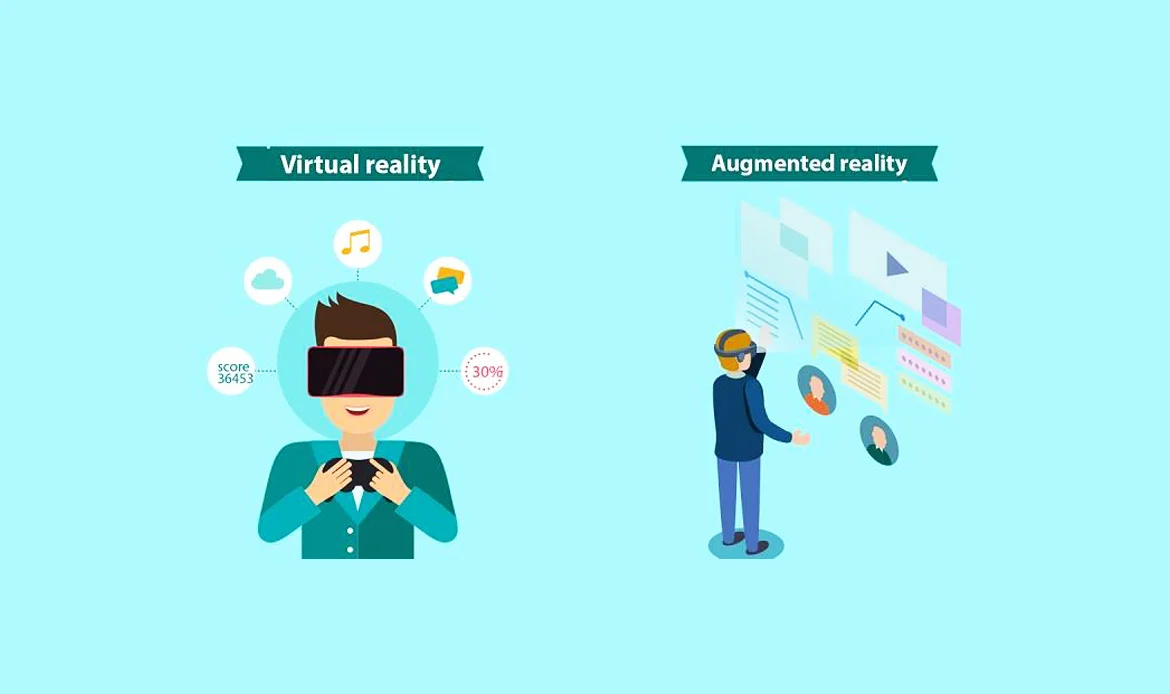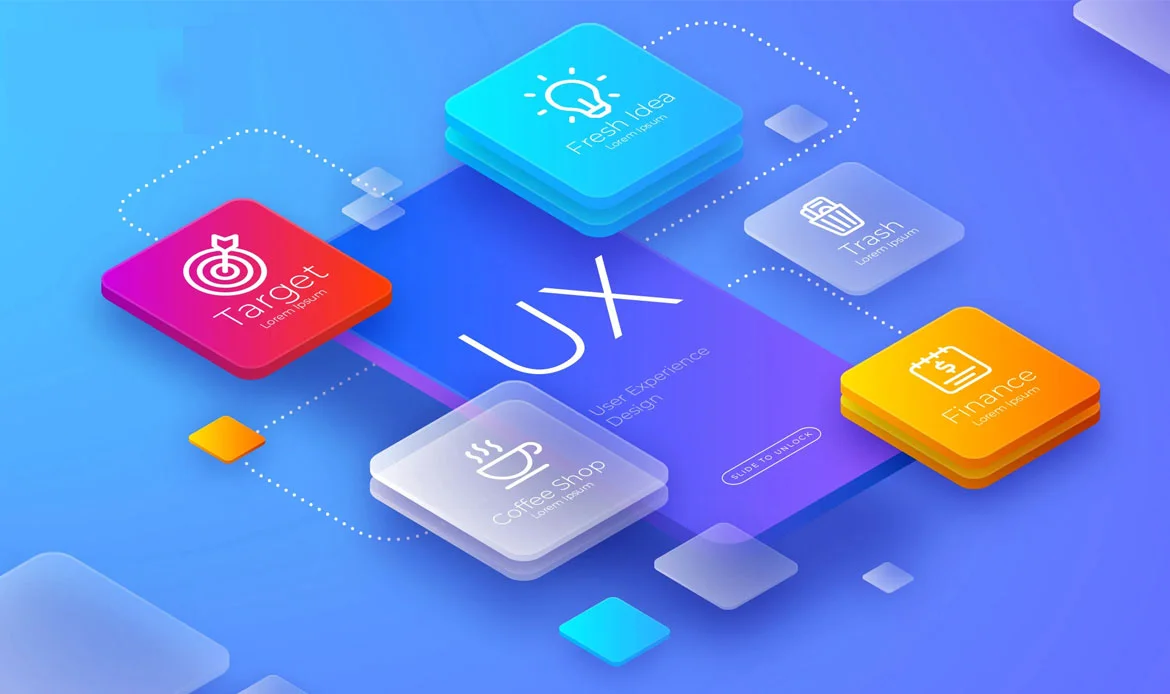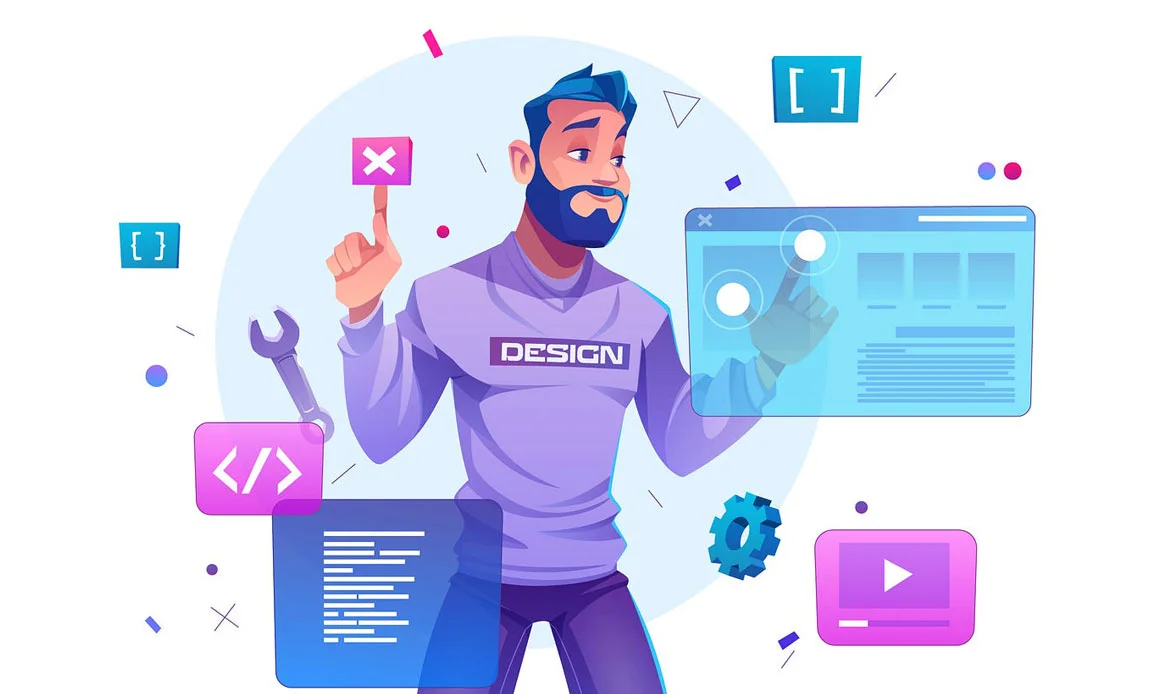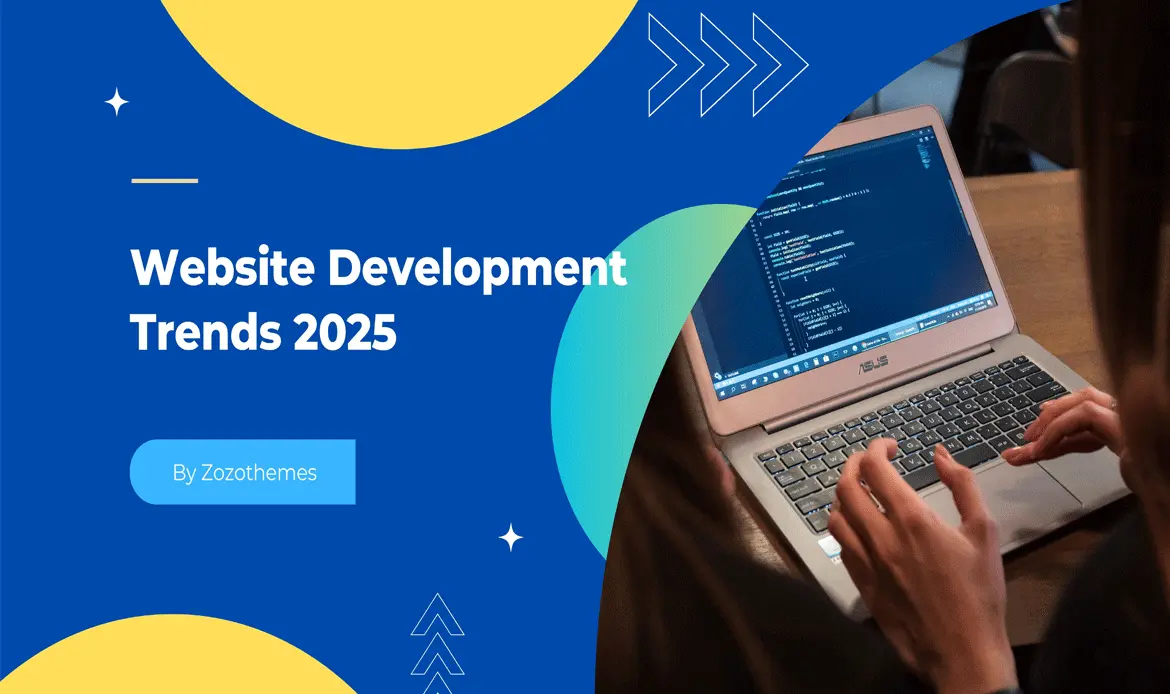Emerging Innovations Shaping Web Development Trends in 2025
1. Artificial Intelligence Integration: Shaping Intelligent Experiences
 Artificial Intelligence (AI) is not merely a buzzword; it’s a transformative force in web development. In 2024, we anticipate a surge in AI-driven applications that enhance user experiences, automate mundane tasks, and provide unparalleled personalization. From chatbots and virtual assistants to machine learning-powered content recommendations, AI is poised to revolutionize how websites interact with users.
Artificial Intelligence (AI) is not merely a buzzword; it’s a transformative force in web development. In 2024, we anticipate a surge in AI-driven applications that enhance user experiences, automate mundane tasks, and provide unparalleled personalization. From chatbots and virtual assistants to machine learning-powered content recommendations, AI is poised to revolutionize how websites interact with users.
Implementation:
Chatbots for Enhanced User Interaction: Integrate a chatbot using AI technologies like Natural Language Processing (NLP) to provide users with instant responses and assistance.
Personalized Recommendations: Implement AI algorithms to analyze user behavior and offer personalized content or product recommendations, enhancing user engagement.
Example:
Suppose you have an e-commerce website. Implement an AI-powered chatbot to assist users with product recommendations, answer queries, and provide a personalized shopping experience based on their preferences and past interactions.
2. Next-Gen Coding Languages: Enhancing Development Efficiency
Web developers are always in pursuit of tools and languages that enhance efficiency and flexibility. In 2024, we delve into the emergence of next-generation coding languages that streamline development workflows.
Whether it’s the simplicity of Rust, the versatility of Kotlin, or the power of TypeScript, developers will have an array of languages at their disposal to craft robust and maintainable code.
Implementation:
Use of TypeScript: Transition from traditional JavaScript to TypeScript for improved code maintainability, static typing, and enhanced developer tooling.
Leveraging Kotlin for Android Apps: Adopt Kotlin for Android app development, benefitting from its concise syntax, null safety, and seamless interoperability with Java.
Example:
If you are developing a web application, migrate part of your JavaScript codebase to TypeScript to catch errors early and improve code quality without sacrificing flexibility.
3. Immersive Experiences: The Rise of Virtual and Augmented Reality

Immersive technologies, such as Virtual Reality (VR) and Augmented Reality (AR), are set to take center stage in web development. As the line between the physical and digital worlds continues to blur, expect to see innovative applications that leverage VR and AR for interactive storytelling, product visualization, and engaging user interfaces.
Implementation:
Virtual Tours or Product Visualization: Integrate VR or AR to provide virtual tours of properties, destinations, or enable users to visualize products in their real-world environment.
Interactive 3D Models: Use WebGL or AR frameworks to implement interactive 3D models, allowing users to explore and interact with objects in a virtual space.
Example:
If you have a real estate website, incorporate VR for virtual property tours, allowing users to explore homes remotely. For an e-commerce site, use AR to enable users to visualize furniture or accessories in their own living spaces.
4. Progressive Web Apps (PWAs): Bridging the Gap Between Web and Mobile
The evolution of Progressive Web Apps continues to reshape the way users interact with websites. Blurring the lines between web and mobile applications, PWAs offer faster load times, offline functionality, and a seamless user experience. In 2025, we explore how PWAs are becoming a standard in web development, catering to the growing demand for cross-platform, responsive applications.
Implementation:
Service Workers for Offline Support: Implement service workers to enable offline functionality, allowing users to access certain features or content even without an active internet connection.
Add to Home Screen Functionality: Incorporate the “Add to Home Screen” prompt to encourage users to install the PWA on their devices, providing a more app-like experience.
Example:
Convert your existing web application into a PWA by adding service workers for offline support and prompting users to add the app to their home screen for quick access.5. Blockchain Technology: Transforming Security and Transactions

The decentralized and secure nature of blockchain technology is making significant inroads into web development. From enhancing data security to revolutionizing online transactions, blockchain is set to play a pivotal role in shaping the future of the web. In this section, we unravel the potential applications of blockchain in web development and how it stands to redefine trust and transparency.
Implementation:
Decentralized Identity Management: Utilize blockchain for decentralized identity management, enhancing security and privacy by giving users control over their personal information.
Smart Contracts for Transactions: Implement smart contracts to automate and secure transactions, reducing the need for intermediaries and ensuring transparency.
Example:
Implement blockchain-based decentralized authentication on your platform, allowing users to control access to their data securely without relying on a centralized identity provider. Integrate smart contracts for transparent and automated transaction processing, ensuring trust in financial transactions.
6. Next-Gen Frameworks: Accelerating Development Workflows
Frameworks serve as the backbone of efficient web development. In 2025, we explore the next generation of frameworks that empower developers to build scalable, feature-rich applications with ease.
Whether it’s the flexibility of Vue.js, the robustness of Django, or the simplicity of Flask, the right framework can make all the difference in achieving development goals.
Implementation:
Vue.js for Versatility: Leverage Vue.js for its simplicity and versatility, allowing for seamless integration into existing projects and easy adoption for developers.
Django for Robust Backend: Choose Django as a Python web framework for its robust and scalable backend development, especially suitable for projects with complex data models.
Example:
If you’re developing a data-intensive web application, consider using Django for the backend to benefit from its ORM capabilities and built-in admin interface, while employing Vue.js for the frontend to create dynamic and interactive user interfaces.7. Evolving Design Philosophies: User-Centric and Inclusive Designs

The focus of web development goes beyond functionality; it extends to user experience and inclusivity. We dissect the evolving design philosophies that prioritize user-centric approaches, accessibility, and inclusivity. From dark mode interfaces to voice user interfaces (VUI), the design landscape in 2025 is a fusion of aesthetics and user-first principles.
Implementation:
Dark Mode Support: Implement a dark mode option to enhance user experience, reduce eye strain, and cater to user preferences.
Voice User Interfaces (VUI): Explore the integration of voice user interfaces, enabling users to interact with your website using voice commands.
Example:
Include a toggle for dark mode on your website, allowing users to choose their preferred interface appearance. Integrate voice commands for navigation or specific actions, enhancing accessibility for users with mobility challenges.
8. Mobile-First Development: Adapting to User Behavior
Mobile usage continues to dominate internet traffic, emphasizing the importance of mobile-first development. In this section, we delve into the strategies and techniques that prioritize mobile responsiveness, ensuring that websites deliver a seamless and optimized experience on a variety of devices. From responsive design principles to mobile-specific optimizations, developers in 2025 must be adept at creating websites that cater to the diverse mobile landscape.
Implementation:
Responsive Design Principles: Prioritize responsive design principles, ensuring that your website adapts seamlessly to various screen sizes and devices.
Accelerated Mobile Pages (AMP): Implement AMP to create faster-loading versions of your web pages, optimizing the mobile browsing experience.Example:
Use media queries in your CSS to create a responsive layout that adjusts based on the user’s device, providing an optimal viewing experience on both smartphones and larger screens.
9. Cybersecurity in Focus: Safeguarding Digital Assets

With the increasing sophistication of cyber threats, cybersecurity remains a paramount concern for web developers. In this segment, we explore the evolving cybersecurity landscape and the measures developers can take to safeguard digital assets. From adopting HTTPS as a standard to integrating advanced security protocols, we unravel the strategies that fortify websites against cyber threats and ensure data integrity.
Implementation:
HTTPS as Standard: Enforce HTTPS across your website to encrypt data in transit, ensuring secure communication between users and your server.
Web Application Firewall (WAF): Implement a WAF to protect against common web application attacks, providing an additional layer of security.
Example:
Configure your web server to use SSL/TLS certificates to enable HTTPS. Integrate a WAF solution to monitor and filter HTTP traffic, protecting your web application from common security threats.
10. Micro Frontends: Modular Approaches to Development
As web applications grow in complexity, the need for modular and scalable development approaches becomes evident. Micro Frontends, an a architectural style that extends the concept of microservices to the frontend, emerges as a solution.
We dissect the advantages of Micro Frontends, such as independent deployment and easier maintenance, and explore how this approach is reshaping the way developers structure and build web applications.
Implementation:
Isolation of Frontend Modules: Break down your frontend into independent, loosely coupled modules that can be developed, deployed, and scaled independently.
Communication via APIs: Use APIs for communication between micro frontends, ensuring seamless interaction while avoiding tight coupling.
Example:
If you have a large-scale e-commerce platform, consider breaking down different sections (product catalog, shopping cart, user profile) into micro frontends that can be developed and updated independently, promoting flexibility and scalability.
11. Voice Search Optimization: A New Era in SEO

The rise of voice-activated devices and virtual assistants has given birth to a new era in Search Engine Optimization (SEO). Voice Search Optimization (VSO) is becoming integral to web development strategies. In this section, we uncover the intricacies of optimizing websites for voice search, exploring the impact on SEO rankings and the user experience.
Implementation:
Structured Data Markup: Implement structured data markup to provide search engines with context about your content, making it more accessible for voice search.
Natural Language Processing (NLP): Optimize your content with natural language that mirrors how users speak, helping search engines understand and respond to voice queries.
Example:
Enhance your product pages with structured data markup, providing details like product names, prices, and availability. Optimize product descriptions using natural language that aligns with how users might voice their queries.
12. Serverless Architecture: Streamlining Development and Deployment
Serverless architecture, despite its name, is not about eliminating servers but rather about abstracting the server management away from developers. We explore how serverless computing simplifies development and deployment processes, allowing developers to focus on writing code without the complexities of managing servers. From cost-effectiveness to scalability, we delve into the advantages that serverless architecture brings to modern web development.
Implementation:
AWS Lambda or Azure Functions: Utilize serverless functions offered by cloud providers like AWS Lambda or Azure Functions for executing code without managing servers.
Event-Driven Architecture: Adopt an event-driven architecture where functions are triggered by specific events, allowing for scalable and efficient processing.
Example:
Instead of deploying a traditional server for handling image uploads, use a serverless function triggered by an upload event to process and store images in a cloud storage service.
13. Cross-Browser Compatibility: Ensuring Consistent User Experiences

With an array of browsers available to users, ensuring cross-browser compatibility is paramount for web developers. In this segment, we examine the challenges posed by diverse browser environments and provide insights into best practices for achieving consistency across different browsers.
From testing methodologies to the use of modern CSS features, developers will gain valuable strategies to ensure their websites perform seamlessly across various browsers.
Implementation:
Use Browser Feature Detection: Employ feature detection libraries to identify browser capabilities and adapt your code accordingly for a consistent experience.
Regular Testing Across Browsers: Perform regular testing across various browsers, including Chrome, Firefox, Safari, and Edge, to catch and address compatibility issues.
Example:
Use feature detection libraries like Modernizr to identify if a browser supports certain HTML5 or CSS3 features and provide fallbacks or alternatives for unsupported browsers.
14. Web Development Trends: Sustainability and Green Coding Practices
As environmental consciousness grows, sustainability becomes a key consideration in web development. We explore the concept of green coding and how developers can adopt practices that minimize the environmental impact of websites. From optimizing energy consumption to eco-friendly hosting options, this section addresses the role of web developers in creating a more sustainable and eco-conscious digital ecosystem.
Implementation:
Optimize Code and Assets: Minimize and compress code and assets to reduce the environmental impact of data transfer and improve website loading times.
Energy-Efficient Hosting: Choose hosting providers that prioritize energy efficiency and utilize renewable energy sources.
Example:
Optimize your website’s images using tools like ImageOptim to reduce file sizes. Choose a hosting provider that emphasizes green practices and ensures their data centers operate efficiently.
15. Web Development Trends: Data Privacy and User Consent in 2025
With an increasing focus on data privacy, web developers must navigate the complex landscape of regulations and user expectations. In this section, we delve into the importance of prioritizing user data protection and obtaining clear consent. From implementing robust data encryption to transparent privacy policies, we explore the strategies that developers can employ to build trust and ensure compliance with privacy regulations.
Implementation:
Clear Privacy Policies: Clearly communicate your website’s privacy policies to users, detailing how their data will be collected, used, and protected.
Cookie Consent Pop-ups: Implement cookie consent pop-ups to obtain user consent before placing cookies on their devices.
Example:
Include a prominent privacy policy link on your website and implement a cookie consent banner that allows users to choose their preferences regarding the types of cookies used.
16. Web Development Trends: Low-Code & No-Code Development for 2025
The democratization of web development is gaining momentum through low-code and no-code platforms. We examine how these tools empower individuals with limited coding experience to create functional and visually appealing websites. From drag-and-drop interfaces to pre-built components, the low-code and no-code movement are reshaping the accessibility of web development, making it inclusive for a broader audience.
Implementation:
Low-Code Platforms: Explore low-code platforms that offer visual development interfaces, allowing users with minimal coding experience to build applications.
No-Code Tools: Utilize no-code tools that enable users to create functional websites or applications without writing any code.
Example:
Consider using platforms like Bubble or OutSystems for low-code development, enabling users to create web applications by visually designing the user interface and defining logic through a graphical interface.
17. Accessibility-First Design: Building for All Users

Creating web experiences that are accessible to users of all abilities is a fundamental principle of modern web development. In this segment, we explore the importance of accessibility-first design and the impact it has on user engagement and inclusivity. From semantic HTML to ARIA roles, we unravel the techniques that developers can employ to ensure their websites are usable and enjoyable for everyone.
Implementation:
Semantic HTML: Use semantic HTML elements to provide a clear structure and enhance screen reader compatibility.
ARIA Roles and Attributes: Implement Accessible Rich Internet Applications (ARIA) roles and attributes to convey additional information to assistive technologies.
Example:
Use semantic HTML5 elements like <nav>, <article>, and <section> to structure your content. Include ARIA attributes like role=”button” for interactive elements and conduct thorough testing using screen readers.
18. Web Development Trends: Real-Time Web Applications for Better Interactivity
The demand for real-time experiences continues to grow, particularly in communication and collaboration applications. We dissect the technologies behind real-time web applications, exploring frameworks and protocols that facilitate instant updates and interactions. From WebSocket to server-sent events, developers will gain insights into building responsive and dynamic applications that keep pace with user expectations.
Implementation:
WebSocket Communication: Implement WebSocket communication for real-time data exchange between clients and servers.
Server-Sent Events (SSE): Utilize Server-Sent Events for one-way communication from the server to the client, enabling real-time updates.
Push Notifications: Integrate push notifications to notify users of real-time events even when the application is not actively in use.
Example:
Create a chat application that uses WebSocket communication for instant messaging. Implement SSE for real-time updates such as live feeds or notifications, enhancing user engagement.
19. Ephemeral Content Integration: Embracing Fleeting Experiences

Ephemeral content, characterized by its temporary nature, has become a staple in social media. In this section, we examine how web developers can integrate ephemeral content features into websites to create engaging and dynamic user experiences. From disappearing messages to time-sensitive updates, we explore the ways in which websites can leverage the trend of ephemeral content to capture user attention.
Implementation:
Stories Feature: Integrate a stories feature where users can share temporary content that disappears after a set period.
Live Streaming: Implement live streaming functionality for users to share real-time content that vanishes once the streaming session concludes.
Countdown Timers: Use countdown timers for time-limited promotions or events, creating a sense of urgency.
Example:
Integrate a stories feature into a social media platform where users can share images or short videos that disappear after 24 hours, encouraging frequent engagement.
20. Web Development Trends: CI/CD for Streamlined Development Workflows
Efficient development workflows are essential for delivering high-quality software at scale. We explore how Continuous Integration and Continuous Deployment (CI/CD) practices streamline the development process, enabling faster and more reliable releases. From automated testing to seamless deployment pipelines, developers will gain insights into implementing CI/CD to achieve agility and maintain code quality.
Implementation:
Automated Testing Suites: Set up automated testing suites to ensure that code changes do not introduce bugs or regressions.
Version Control Integration: Integrate version control systems like Git to manage and track changes to the codebase.
Automated Deployment Pipelines: Create automated deployment pipelines that streamline the process of pushing new features or bug fixes into production.
Example:
Use tools like Jenkins, Travis CI, or GitHub Actions to set up CI/CD pipelines. With every code push, automated tests are run, and if successful, the changes are automatically deployed to staging or production environments.
Frequently Asked Questions on Web Development Trends 2025
1. What are the top web development trends in 2025?
In 2025, key web development trends include AI-powered websites, low-code/no-code platforms, progressive web apps (PWAs), Web3 integration, and voice-enabled interfaces. These innovations focus on speed, personalization, and accessibility.
2. How will AI and automation impact web development in 2025?
AI and automation will streamline coding, enhance testing, and provide real-time personalization for users. From AI chatbots to automated SEO, developers can build smarter websites faster while reducing human errors.
3. Why is responsive and mobile-first design still crucial in 2025?
With mobile usage dominating global internet traffic, responsive and mobile-first design ensures seamless performance across all devices. In 2025, Google’s mobile-first indexing makes this trend vital for SEO and user engagement.
4. What role does Web3 play in the future of web development?
Web3 is shaping a decentralized internet by integrating blockchain, smart contracts, and tokenization. For developers, this means building more secure, transparent, and user-owned web experiences in 2025 and beyond.
5. How can businesses stay ahead of web development trends in 2025?
Businesses can stay ahead by adopting scalable frameworks, embracing AI-driven tools, optimizing for Core Web Vitals, and exploring Web3 opportunities. Continuous learning and staying updated with industry innovations is key.
Final Thoughts
As we conclude our journey into the future of web development, it becomes abundantly clear that 2025 holds unprecedented promise and innovation for the digital landscape. The trends we’ve unveiled, from the integration of artificial intelligence to the evolution of immersive experiences, paint a vivid picture of a dynamic industry poised for remarkable transformation. Embracing these trends is not merely a choice but a strategic imperative for developers, businesses, and digital pioneers looking to thrive in the fast-evolving online realm.
Embrace the Future of Web Development in 2025
Step into the next era of innovation with our cutting-edge WordPress themes, designed to match the latest web development trends of 2025. From lightning-fast performance and advanced SEO optimization to AI integration and responsive layouts, our themes empower developers and businesses to build future-ready websites with ease.


